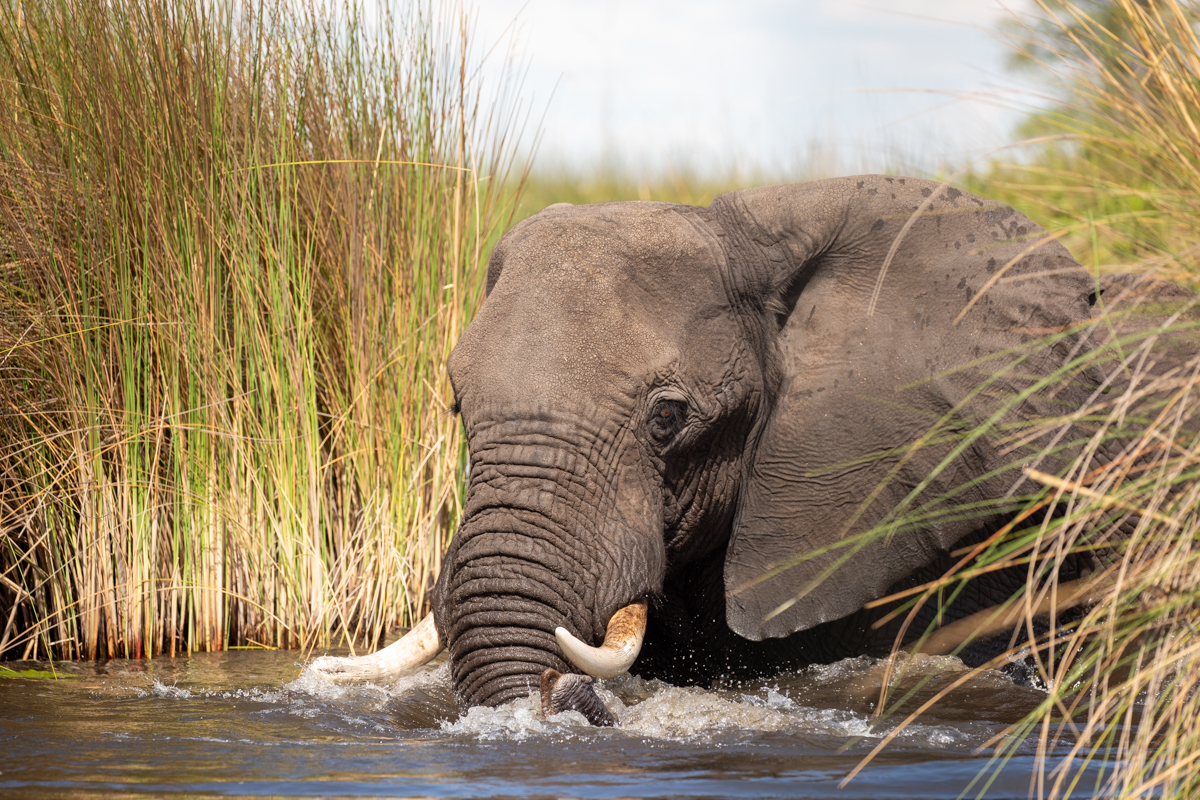Home to more elephants per square kilometer than any other country on the planet, Botswana is a wildlife photographers dream. Of all the countries I’ve travelled in Africa, it’s the only place where I’d be driving down the highway only to have a herd of elephants cross in front of me. It’s the sort of dream African destination they show you in movies but rarely live up to expectations. Botswana is photography heaven. And the good news is that there’s even more to photograph than just the wildlife.
On this guide to travel and photography in Botswana, I’m going to try to give you some insight on how to properly explore the country getting the best photos, and having the least amount of stress.

Getting Around Botswana
If you look at a map of Botswana you’ll see that the road network isn’t exactly extensive. Basically, there’s a ring road that is comprised of 3 different highways: the A1, A2, and A3. Then, there are some smaller roads that veer off of the loop. There a couple other “A roads” which head to The Zambia (A33), The Caprivi Strip of Namibia (A35), and western Namibia (A2). These A roads are usually in pretty good shape, all paved.
There are then smaller roads that head off into more remote areas. Most of these roads are gravel, some are sand, and some are hardly roads at all.
Self-Driving
It’s definitely possible to self-drive Botswana. In fact, I’ve done this on most of my trips to Botswana. But, I would highly recommend you have a lot of experience driving a 4×4 before you go. There are roads in places like the Okavango Delta that are extremely hard to navigate and not exactly the place you’d want to get stuck.
The other option is to drive yourself between major tourist towns like Maun and Kasane and then jumping on safaris. You’ll get a bit of freedom, and some help along the way.
Overlanding
I’m a big an of overlanding. It’s a fun way to see a country along with a guide and a small group. There are lots of companies that offer overlanding tours in Botswana like Intrepid and G-Adventures.
As a photographer, though, it might be tricky to get good photos on these trips. You’re often way up in the overland vehicle on safari and don’t get a great angle or view of the wildlife. That said, it’s a great budget option to see the country completely guided.
Safari
Going on a safari in Botswana is definitely the best option if you don’t want to self-drive. The guides in this country are outstanding and they have heavy levels of expertise and understanding on the wildlife and nature of the region. You will learn a lot and get great photos.
The company that I recommend is Kalahari Tours. They’re based in Kasane.
Better yet, join my photography-specific tour in Botswana. I’ve got one in both 2024 and 2025.

Where to Stay in Botswana
I was once talking to someone at the tourism board from Botswana. They told me something that kind of struck me as both elitist and logical. They claimed they didn’t want budget tourists.
“Why have 100 tourists a day spending 10 dollars a day when you can have 1 tourist spending 1,000?” They said. “Fewer people is better for the conservation, and makes it easier to protect nature and preserve the country.
And while I totally dislike the way it turns travel into elitism (even more so than it already is) it does make some sense.
Luckily for us, though, that don’t have a lot of money, there are still some options.
Lodges
There are a number of types of lodges. There are more budget-friendly lodges in the towns and villages. But, if you’re looking to stay at a safari lodge in the middle of nature, the prices can be astronomical. In the Okavango Delta, for example, there are lodges that go for around 800 Euros a night, per person.
If you need the comfort of lodges while on safari, be prepared to pay for them.
That being said, to stay at a lodge in Kasane or Maun, the prices are much more reasonable.
Camps
If you don’t have the money for lodges, chances are that you’ll be camping – one way or another. There are a very few number of campsites in the national parks of Botswana. But many of them are extremely hard to get to on your own. Usually, you’ll have to follow 4×4 tracks and have the skill to get there.
Moreover, it’s important to note that most of the camps in the national parks in Botswana are unfenced. So, it’s not uncommon for elephants, hyenas, or even lions to come wandering through the camps.
In the tourist towns like Maun or Kasane, there are proper campsites and hostels as well.

Camera Gear for Botswana
If you know me as a photographer, you know how much I dislike talking about camera gear. I think it’s something so personal, and you can get amazing photos regardless of what camera equipment you use. You’re much better off bringing camera equipment with you that you’re comfortable with, than you are expensive gear.
That being said, this is my ideal camera gear situation in Botswana.
For camera lenses, I’d bring at least 3 lenses. You’ll likely want a wide angle lens like the Canon 14-35mm to get those big open views in places like the Delta. You will also want something like a 70-200mm. Often times on safari you’ll find yourself in tight quarters and actually a really long lens will cause problems. Finally, you’ll likely want something that gets you to 400 or 500mm. With wildlife, size does matter and you’ll find that most of your better images will come in the 400-500mm range.
I’d also bring a tripod, but not for wildlife photography – I’m a big believer that handheld (or supported) gets you better flexibility to take good photos with wildlife. You might want a beanbag to rest on the car windowsill.
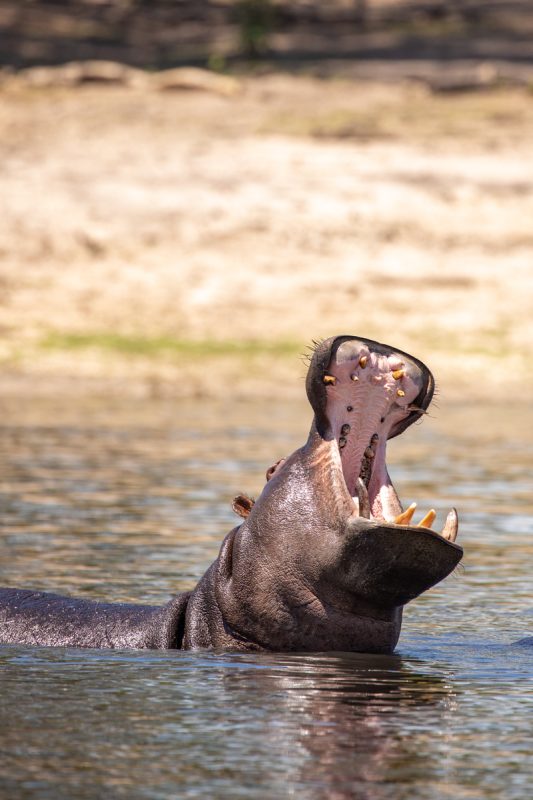
The Best Places for Photography in Botswana
I’m sure there are more amazing photo locations in Botswana than I’ve been to. I’m focused mostly on the wildlife of Botswana, so this guide is also focused on those places for wildlife photography. As always, as I visit more of Botswana, I’ll be updating this list.
Chobe National Park
This can be one of the most magical places on earth. When the elephants have made there way here on migration there can be hundreds and hundreds of them roaming around. You’ll see a line of 50 elephants crossing the Chobe River – only the trunks of baby elephants stretching up for air like a snorkel.
Here you can do a land safari and spot lions, elephants, giraffe and loads of other ungulates. But for me, the best thing is to get in the water on a river cruise. You’ll see hippos and elephants up close, you’ll see Nile crocodiles and lots of beautiful birdlife.
Chobe is not to be missed. You can easily base yourself in the town of Kasane and see most of it.
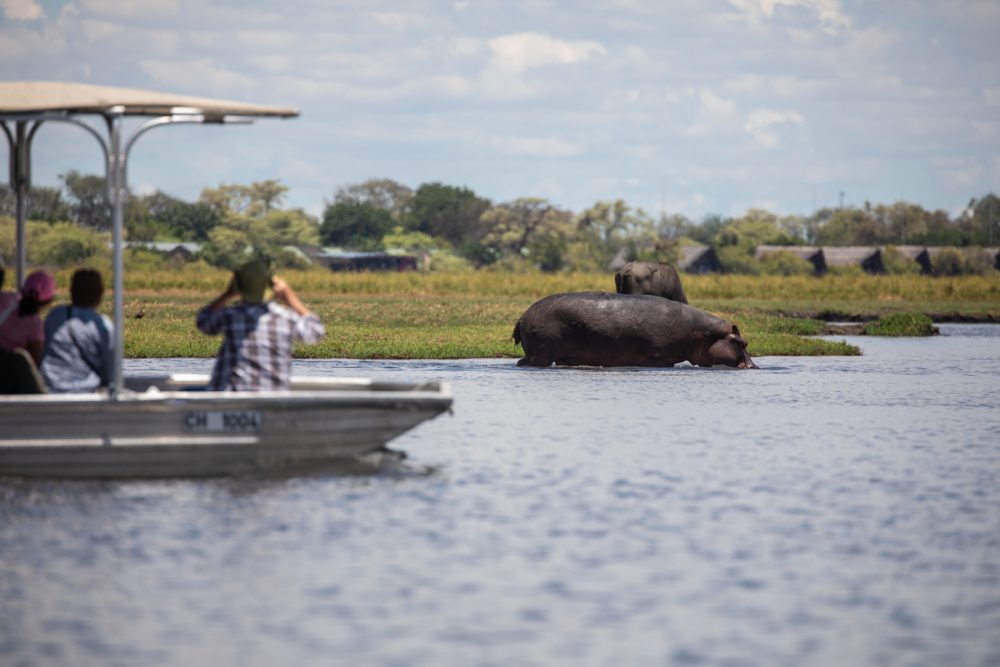
Elephant Sands
Totally underrated, Elephant Sands is a really special place for photographers – or just regular tourists.
There are so many different things to photograph here. Obviously, you have the elephants. The open landscape and waterholes make it a meeting ground for the elephants and other wildlife. Moreover, the landscapes themselves are beautiful. There’s a mix of salt flat and savannah here. If you’re into birding, this is also a great spot for that.
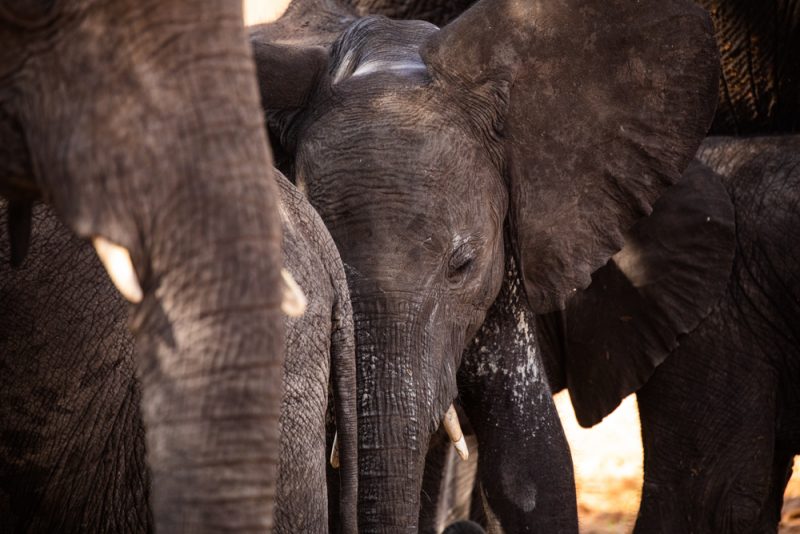
Nxai Pan
I’m going to start sounding like a broken record, but Nxai Pan is also totally underrated. It’s a national park in the heart of Botswana and it’s full of photography opportunities.
Like most of the national parks in Botswana, the focus for photographers here will likely be the wildlife. You’ll find elephants, zebra, giraffe, kudu, and more. There are the occasional big cats in the area, but it’s fairly rare to see them in Nxai.
Beyond the wildlife, Nxai is a beautiful place for landscapes. You have incredible baobab trees all over the park. You also have Acacias and salt pans to photograph. It’s a really special place. Oh, and if you’re into astrophotography, it’s an absolute gem for this as well.

Savuti
So Savuti is actually a region within the greater Chobe National Park. However, in this guide, when I refer to Chobe, I’m talking mostly about the area directly adjacent to the town of Kasane.
Savuti is a bit more of a mission to get into. You’ll need a 4×4 or to be on a tour with a local operator. But, it’s worth the extra effort.
Most guides here will follow a waterway called the Savuti Channel. It’s here that most of the wildlife will wander as it’s their biggest source of water. This region is probably the best in Botswana for big game predator encounters. Leopards, lions, and cheetahs are all present in this area and commonly seen. There also some fantastic bird photography opportunities in this area.

Okavango Delta
I’ve saved the best for last – in my opinion.
The Okavango Delta is not only one of the best places in Botswana for photography, it might be one of the best places on the planet to explore. Period.
It is as raw and wild a destination as you’ll find in Southern Africa and absolutely hums with life. Wildlife is everywhere. On the waterways of the delta you’ll have close encounters with hippos and elephants. On land you’ll find lions, leopards and plenty of hyenas.
The landscape too is pretty special. Especially as seen from a canoe on the waterways.
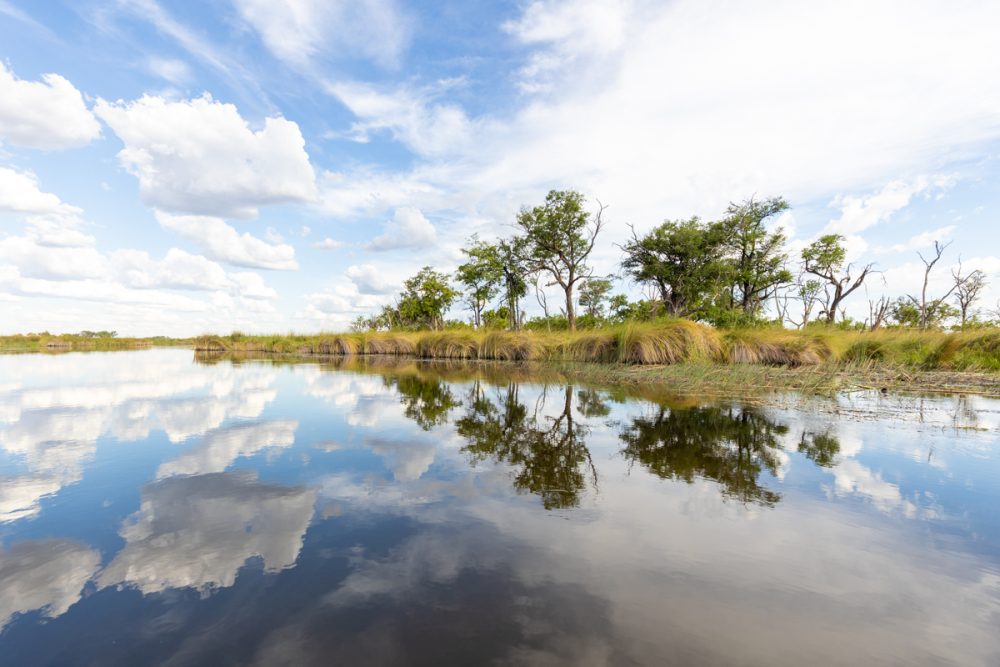
A Photographers Itinerary for Botswana
These are 3 small itineraries that you might want to follow as a photographer in Botswana. And note, these are all self-driving itineraries.
The Epic Loop
You might actually want to start your trip in Livingstone, Zambia or Victoria Falls, Zimbabwe. I mean, you’re so close to Victoria Falls, why not? You can find 4×4 hires in both of these towns as well.
Leaving Victoria Falls, head to Kasane. Then, travel the hard way across Chobe National Park towards the Okavango Delta. Note, this drive should only be attempted outside the wet season. Spend a couple days in the wilds of both parks before catching a day or two break in Kasane to get a proper shower and electricity.
Then, head across to Elephant Sands, then across to Nxai Pan, and finally up to Kasane and home to Victoria Falls.
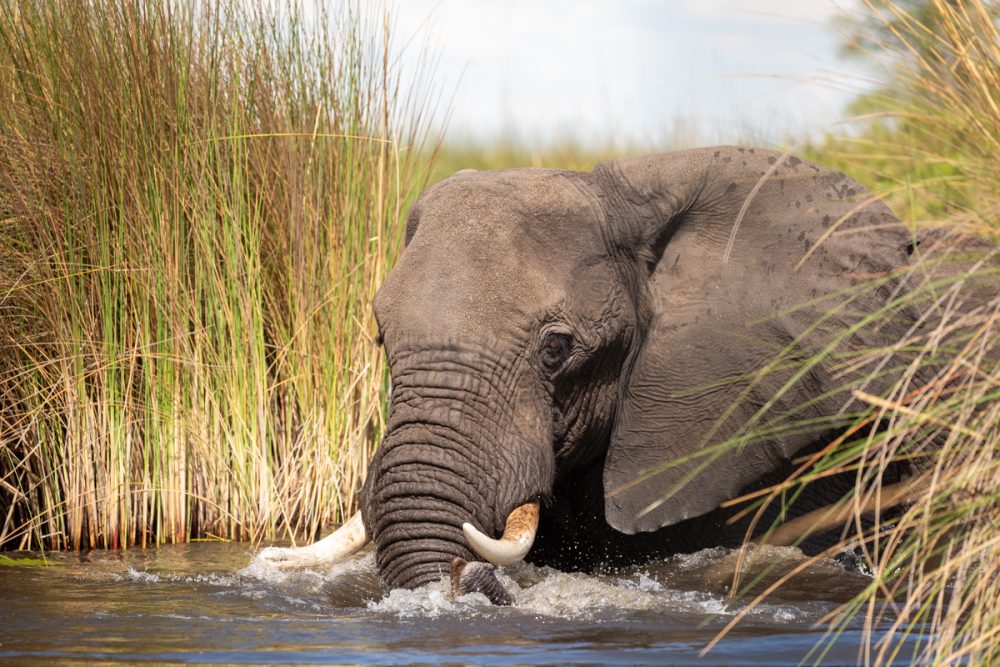
Intermediate
If you want something pretty epic, but don’t think you can handle the massive crossing from Kasane to Maun, you can also do it in bits. You can base in Kasane and do shorter trips into Chobe National Park and Savuti. Then, you can drive down to Nxai Pan and Elephant Sands. Finally, you can head to Maun and again do shorter journeys into the Okavango Delta.
Easy Self-Drive
If you want to self-drive, but you’re apprehensive about 4×4 driving, you can do a version of the above. But, when you’re in Kasane, organize trips into Chobe National Park with local tour operators. Same with The Okavango. Head to Kasane and organize safaris with local operators there.
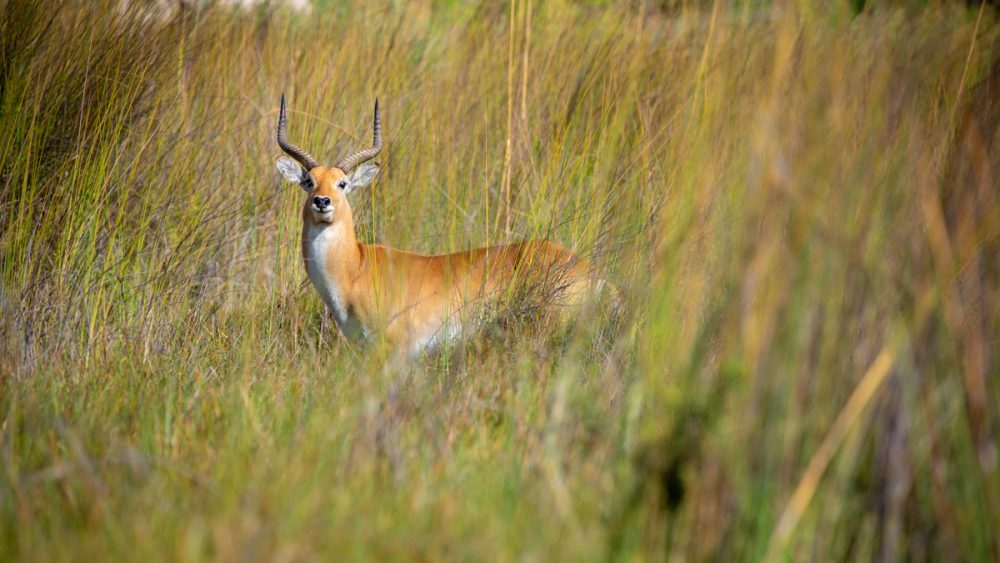
Budgeting for Botswana as a Wildlife Photographer
I alluded to this earlier in the article, your budget in Botswana is going to range more wildly than basically any other country in Africa due to the costs of their safari lodges. I’d say that you have 3 options: budget, mid-range, luxury.
If you’re looking at a budget, you’ll be self-driving or on backpacker-style overlanding trips. This will cost about 150 usd per day. Depending on your 4×4 rental costs.
The midrange is a mix of camping and lodges. You’d looking at about 250 usd a day. But, you could cut that down a bit by only staying in lodges outside of the national parks where they’re cheaper, and camping inside the parks.
On the luxury side of things, well, get your wallets ready. There are lodges that have costs of $2,000 a day but include everything including flights into the parks on small planes. In my opinion, if you’re going to go the luxury route, it’s best to simply book an all-inclusive multi-day safari package with one of the local operators and let them do all the planning for you.
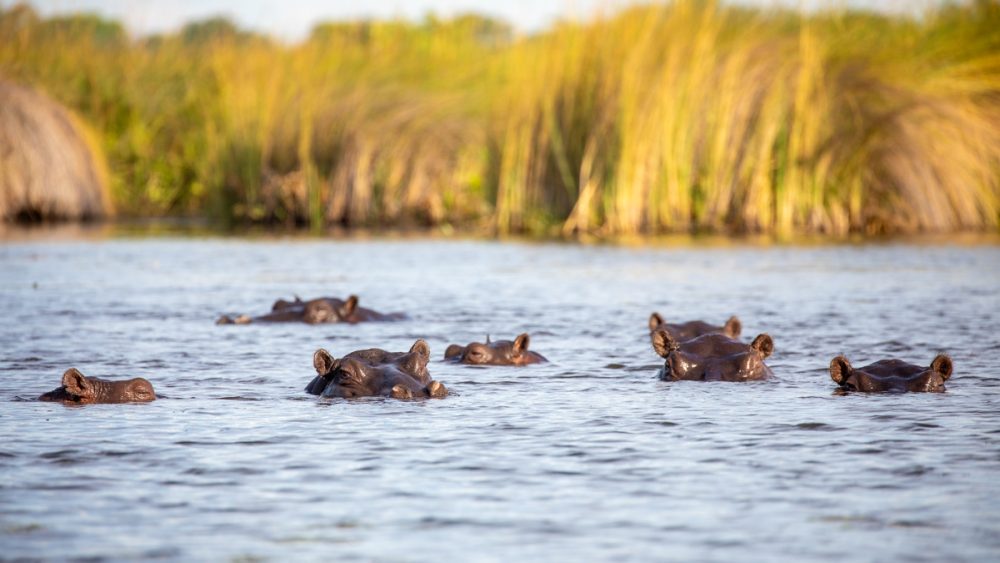
Camera Safety in Botswana
I’d say that of all the countries I’ve travelled in Africa, Botswana has felt to be the most safe. I didn’t ever feel like my camera gear was at risk, even in the capital.
That said, there is theft everywhere. So don’t be silly with your camera gear and just leave it unattended. Keep valuables out of sight in your vehicles and hotels rooms, and follow the usual cautions.
The biggest threat to your camera gear in Botswana is probably yourself and the weather conditions. The dust can particularity be bad and get into the gears of camera lenses.
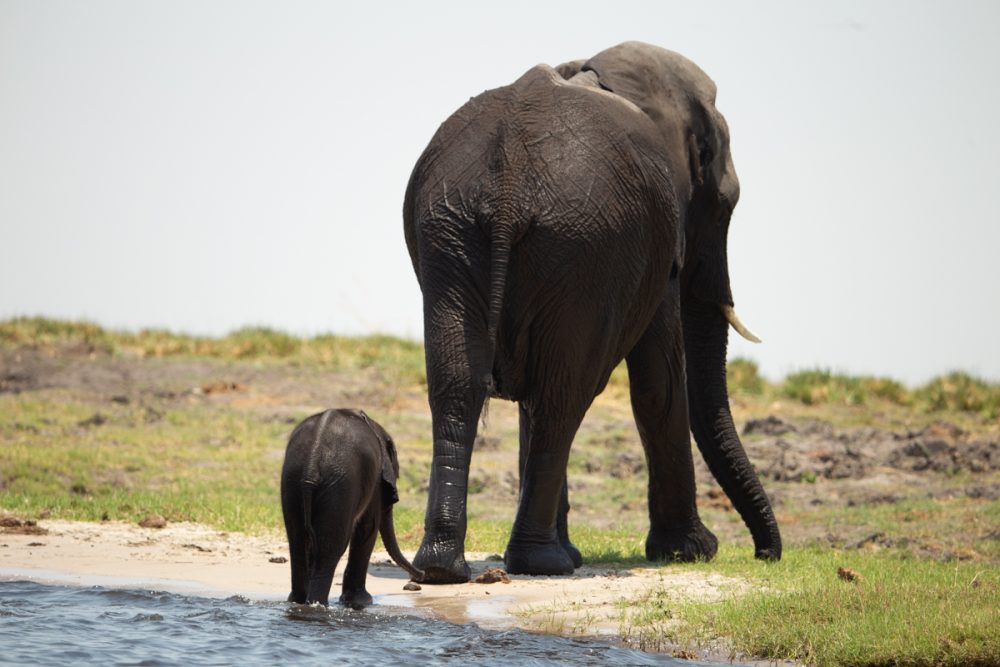
Photography Tour in Botswana?
I might be biased when I say this, but if you’re a photographer and you haven’t been to Botswana, the best way to see it is by joining a photography tour. These trips will be laid out for you in a way that makes sure you get the best photos out of your time in the country. Photo leaders will make sure you’re also getting to take your photos in the best light possible.
Personally, I run a photography tour to Botswana ever year or so. I have trips coming up in both 2024 and 2025. You can find information on that tour and all my others here.
And if you’re interested in learning more about future photography adventures I might have in store, please sign up for my newsletter below.

